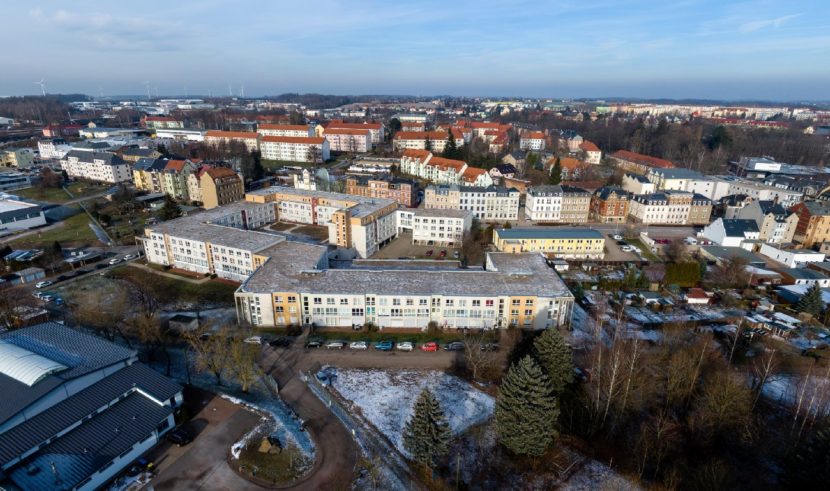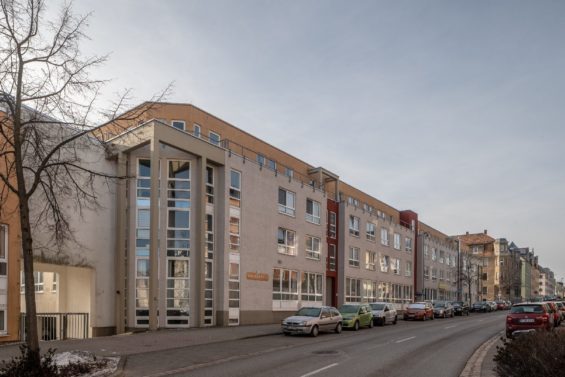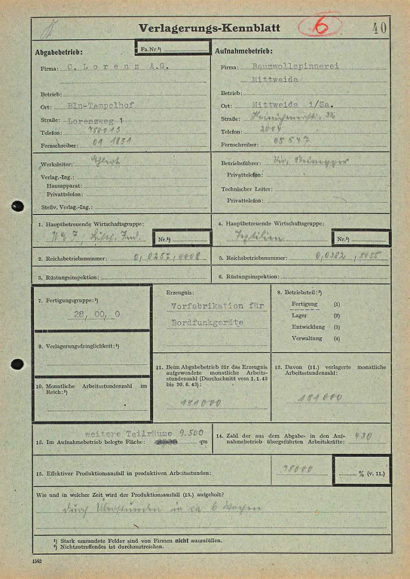Mittweida Subcamp
October 9, 1944 – mid-April 1945
![]()
Aerial view of the former factory grounds in Mittweida, 2019 (Flossenbürg Concentration Camp Memorial / Photo: Rainer Viertlböck)
![]()
Former factory grounds in Mittweida, 2019 (Flossenbürg Concentration Camp Memorial / Photo: Rainer Viertlböck)
![]()
Relocation form submitted by the company C. Lorenz, 1944 (Bundesarchiv Berlin). With this form the company applied to have the prefabrication of on-board equipment relocated to Mittweida.
-
Prisoners
500 women, of whom about 300 were from the Soviet Union, over 150 from Poland, 23 from Italy, and others from Yugoslavia, Croatia and Germany.
-
Forced labor and quarters
Metal working and manufacturing of synthetic resin parts for the electrical company C. Lorenz AG. The production had been moved from Berlin to the disused Weißthal spinning mill (in Bahnhofstraße).
-
Some women worked in the test bay of the factory. The women were quartered in barracks on grounds enclosed by a fence, not far from the factory.
-
Guards
9 guards (Yugoslavian SS men), between 23 and 27 female overseers. After an attempted escape by a prisoner, detail leader Teichmann was replaced by Adolf Nies.
-
Death toll
Two documented instances of death, with further fatalities on a death march; the exact death toll is unknown.
-
Disbanding of the camp / end of the war
The subcamp was seemingly hastily evacuated in mid-April. The women had to march by foot to Freiberg and were then placed in open train wagons and transported in the direction of the Czech border.
-
Soviet troops liberated some prisoners in Prague in the beginning of May 1945. Others were transported to Budweis (České Budějovice), where they were liberated by the U.S. Army.
-
Commemoration
On April 25, 2005, a bronze commemoration plaque, donated by the Mittweida town authority, was unveiled close to the former camp grounds.


